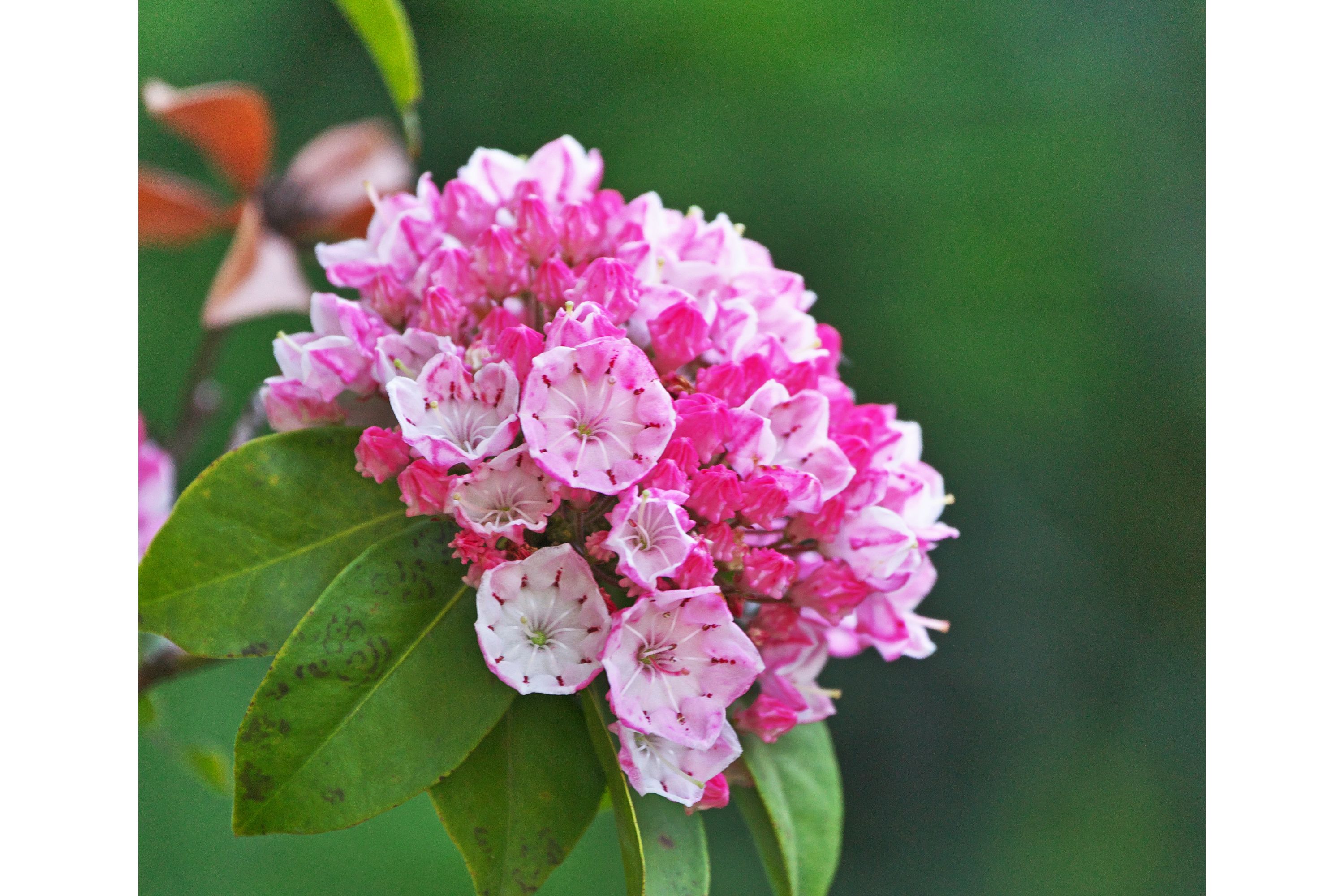Alpine laurel
(Kalmia microphylla)

Description
Kalmia microphylla, known as alpine laurel, bog laurel, swamp-laurel, western bog-laurel or western laurel, is a species of Kalmia of the family Ericaceae. It is native to North America and can be found throughout the western US and western and central Canada below the subarctic. Kalmia microphylla are characterized as being short, shrubs that have a maximum height of 24 inches and their growth rarely surpasses 6 ft. This plant is easily mistaken for the K. polifolia "bog-laurel" because of the similar characteristics of their flowers. K. microphylla can be distinguished by their clusters of pink or purple bell shaped flowers. The flowers are held within five fused petals that open in the shape of a cup. The stamens held within the petals react to insects that land on them by covering them with pollen. The plant produces green fruits, which are small and hard in form. Fruits are five parted capsules. The leaves of this plant are oppositely attached and are not deciduous. Leaves are distinctly lanceolate in shape with rolled leaf edges, a leathery texture, and dark green color. The plant's branches and twigs are fuzzy in early growth and then during maturity become smooth and reddish brown to grayish in color. This is a perennial species and has active growth during spring and summer. These plants can frequently be found in alpine meadows, open wet areas and bogs. The habitat in which it optimally grows in open heath or shrublands with moist soil. The soil must have very low levels of calcium carbonate because the plant is intolerant of alkaline conditions. Distribution of Kalmia microphylla ranges from Alaska to California and now has expanded through much of northern Canada. Kalmia is a genus of about ten species of evergreen shrubs from 0.2–5 m tall, in the family Ericaceae. They are native to North America (mainly in the eastern half of the continent) and Cuba. They grow in acidic soils, with different species in wet acid bog habitats (K. angustifolia, K. polifolia) and dry, sandy soils (K. ericoides, K. latifolia). Kalmia was named by Linnaeus to honour his friend the botanist Pehr Kalm, who collected it in eastern North America during the mid-18th century. Earlier Mark Catesby saw it during his travels in Carolina, and after his return to England in 1726, imported seeds.
Taxonomic tree:







